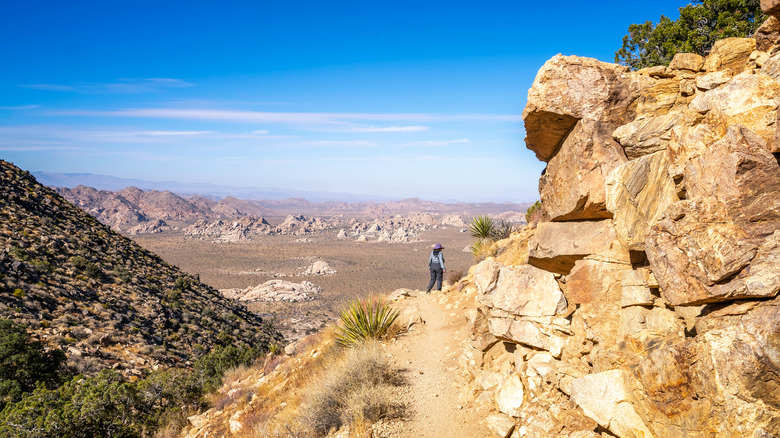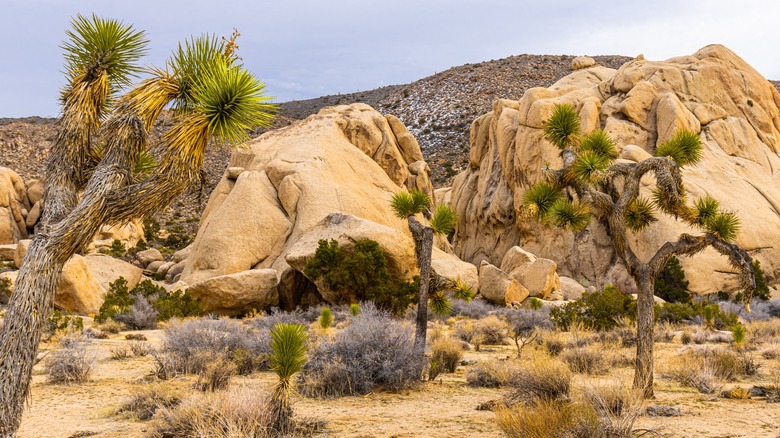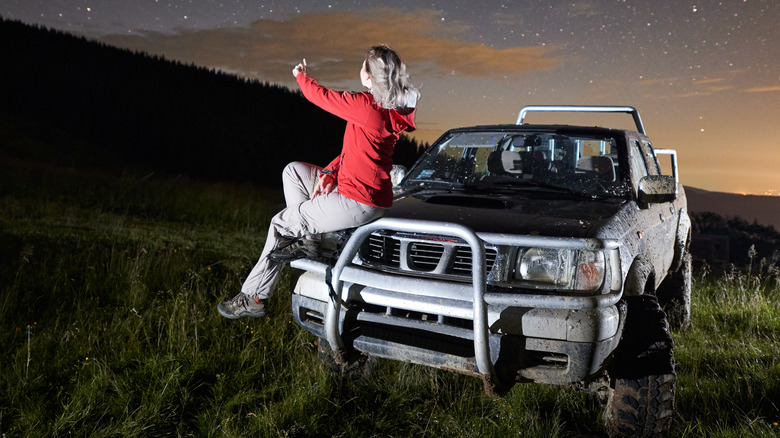One Of Joshua Tree National Park's Best Trails Is Full Of Wildlife And Unbeatable Views
No photographic image has ever done justice to the desert. Forests and mountains are endlessly photogenic, as are beaches and jungles. But the experience of taking in a desert vista has as much to do with the volume of stillness, air, and sky surrounding you as it does with what you superficially "see" with your eyes.
Standing atop Ryan Mountain in Joshua Tree National Park, you become acutely aware of the majestic vastness of the earth, filled with an inclusive sense of awe and grandeur that makes you feel one with the planet. This is why we hike. Those of us who grew up in forests may have seen pics of the desert and gave a dismissive, "I just don't get it" shrug. But when we experience the desert for the first time, we are always wowed and cowed and completely taken off our guard. Because the indescribable, by definition, cannot be captured adequately in photos or in words. You have to be there.
The 3-mile out-and-back hike up Ryan Mountain is one of the most iconic in Joshua Tree and the park's top-rated hike, according to AllTrails, which lists it as moderately difficult. There's a lot of reward for effort on this one, as the mountaintop views are stunning. And along the way, you'll see wildflowers and wildlife galore. You're likely to share the trail with the park's famous desert bighorn sheep at some point — after all, they enjoy a romp up a mountain just as much as you do.
The hike up Joshua Tree's Ryan Mountain
From a distance, the slope of Joshua Tree's Ryan Mountain appears gentle. Do not be deceived. You'll be climbing over 1,000 feet, with most of that elevation gain occurring over a short distance, in full sun. For this reason, this hike should only be undertaken between October and May. Spring and fall are by far the best times of year to visit Joshua Tree, when you won't be so impacted by desert heat, desert cold, or desert crowds.
As you set out, you'll pass groups of rock climbers bouldering on the granite formations that line the trail. Some of this granite is 1.6 billion years old. Visitors refer to this hike as a StairMaster workout because there are so many steps along the route. These are designed to prevent erosion, not to make your climb easy, and they can be much taller than good ergonomics would recommend, and thus particularly hard on the quads while ascending, and the knees while descending. Hiking poles are your best friends here.
The generally accepted rule of thumb is to bring at least one liter (33.8 fl oz.) of water per hour of hiking, and you can plan on two to hours for this one. Pack a light windbreaker into your day pack, because even if it's warm at the base, the windy summit can be chilly. And you'll want to linger at the summit a while, to fully take in the astonishing, 360-degree views. There is that vastness, the shallow pan of the park's floor spread out beneath you, dotted with Joshua Trees, a ring of mountains in the distance, and glimpses into an area of pinnacles called the Wonderland of Rocks. Peer south on a clear day and you can see Mexico.
Planning a trip to Joshua Tree
Joshua Tree can be done as a day trip from Los Angeles, just two hours away. Or it can be a stop on an epic grand tour of all nine of California's national parks. But we recommend at least making it an overnight, so you can include the joyful experience of seeing a sunset from atop Ryan Mountain, and after that, the astounding night skies where the Milky Way and shooting stars put on a spectacular show. Joshua Tree is an International Dark Sky Park, and has four designated areas for viewing where no bright lights are allowed, and the Ryan Mountain parking lot is one of them. So pick a night when there is little to no moon, take a sunset hike (don't forget your headlamp, preferably a red light one to preserve night vision), then lie back on the hood of your car with a blanket and a thermos of hot spiced cider, and wait for the show to begin.
To spend the night, it's helpful to know that of Joshua Tree's nine campgrounds, Cottonwood has the darkest skies. But if you're camping with kids, choose Jumbo Rocks, where the rock formations interspersed throughout make excellent climbing structures. If glamping is more your style, there are endless options, from yurts, domes, and safari tents on GlampingHub, and if you're splurging (those desert nights can be cold!), there are numerous cozy hot springs resorts in the area, like Two Bunch Palms, where lithium-rich waters from a 600-year old spring are said to improve your mood — if you weren't already blissed-out from standing on top of the world.


